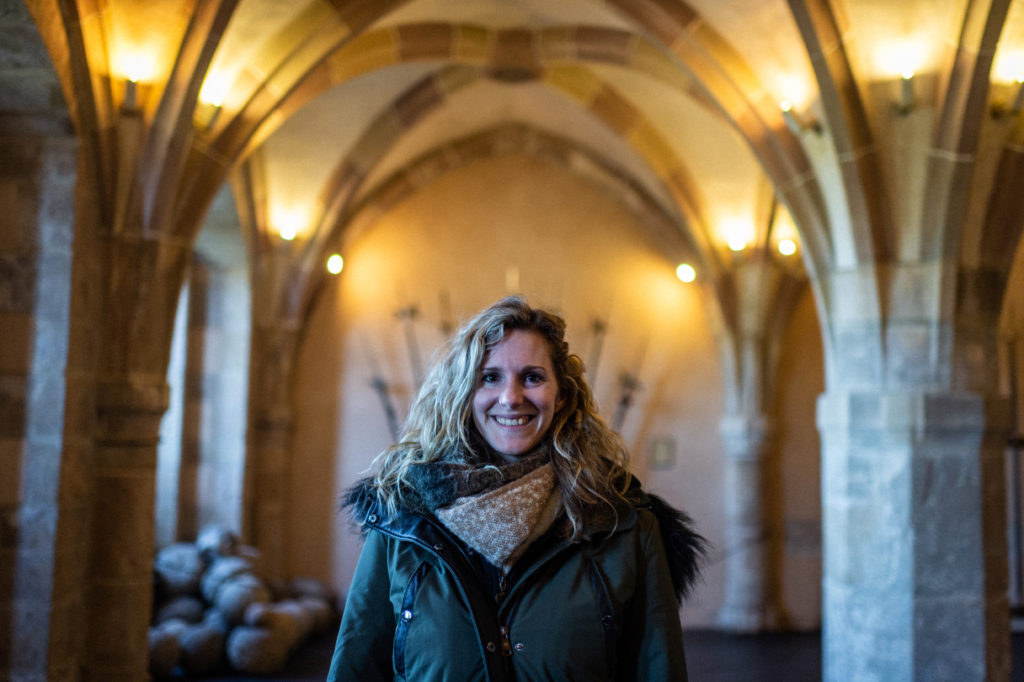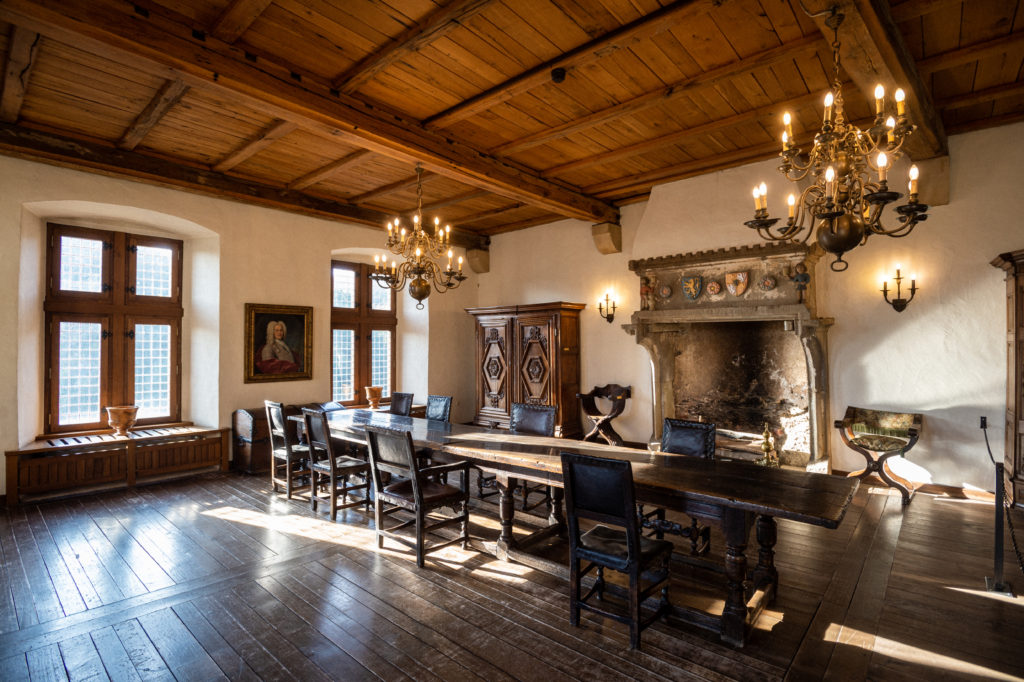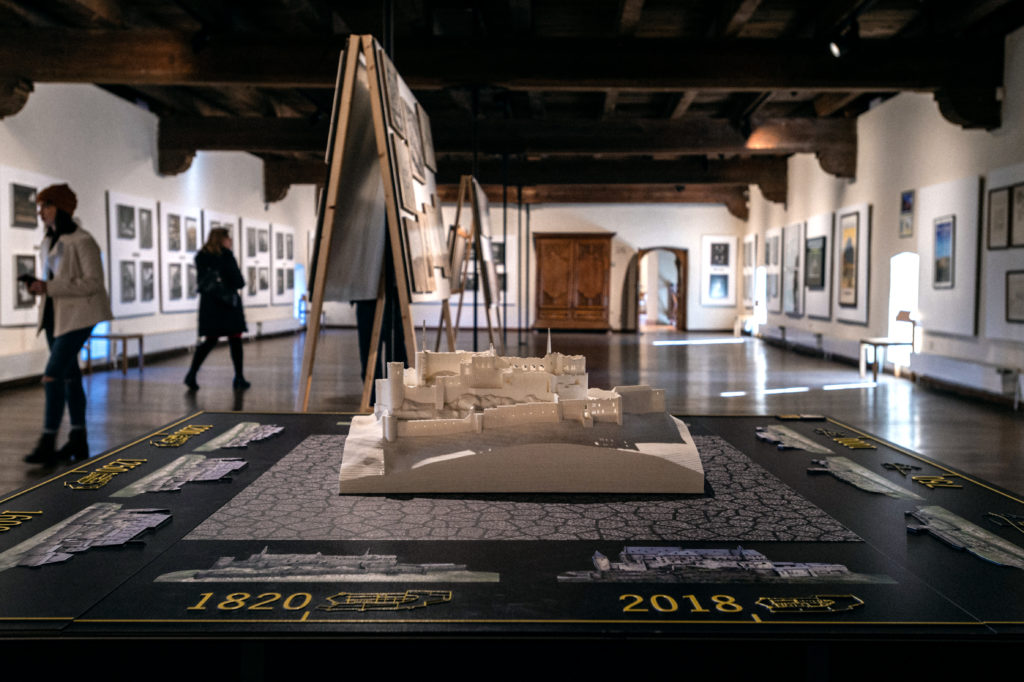The strategic importance of Luxembourg during the last two millennia is reflected in the presence of some 70 castles and fortresses around the country, including the city of Luxembourg itself. It is a rich heritage, offering history enthusiasts both dramatic ruins and skilful restorations. Visitors can also take part in a number of medieval festivals, exhibitions and concerts or follow the national hiking trail of the “valley of the seven castles”.


Numerous beautiful and majestic castle ruins can be found in Luxembourg. Why this particular castle was chosen to be fully restored, I do not know, but I am very happy that they picked Vianden.
A FEAST FOR THE EYES
Perhaps one of the most well-known and spectacular historical sites of the Grand Duchy is Vianden castle, perched high up on a hill, offering an exceptional view of the Our valley and its picturesque fairytale town of Vianden below. Ranked among the most significant historical monuments in Europe, the castle remains one of the largest feudal residencies of the Romanesque and Gothic periods in Europe, and was crowned one of the world’s top 21 most beautiful castles by the CNN in 2019, describing it as “a feast for the eyes and a time trip back to the bygone age during which they were created.”
Being the most visited monument of the Grand Duchy, the castle has seen a steady increase of visitors over the past decade. With the main target audience being adults (over 70 per cent of visitors in 2018 were adults), the information centre, completed in 2017, marks the first stop of the tour, highlighted by a short motion picture showing the complete known history of the grounds.
Catering to children, audio guides presented by the family friendly ghost Vidi, and a number of interactive and audio-visual games, available in French, German and English can be found dabbled around in the new information centre of the castle. To round off the unique experience and bring them back to medieval times, wooden swords, bows and arrows, shields and armor, are some of the many items available for youngsters at the gift shop.

A STROLL THROUGH HISTORY
With origins dating as far back as the third century, Vianden castle was constructed between the 11th and 14th centuries on the foundations of a Roman ‘castellum’ and a Carolingian refuge, serving as the residence of the Counts of Vianden until the beginning of the 15th century. During their stay, a number of transformations marked their reign, including the addition of a kitchen, a chapel, residential rooms and even a residential tower. Highlighting the rivalry of the time between the Counts of Vianden and the House of Luxembourg, a lavish two-story palace with a splendid gallery connecting to the chapel completed the castle at the beginning of the 13th century. During the 16th century, however, the castle was more or less abandoned by the Counts, who had gained the additional title of the House of Nassau-Orange.
In 1820, the castle was acquired by Wenceslas Coster, a businessman from Vianden, who proceeded to selling the complete inventory, as well as parts of the castle, over the next 7 years, leading to the decay of the once beautifully kept Vianden castle.
“After having bought the castle, Wencelas Coster marketed and traded almost everything that could be moved, including furniture, win- dow panes, parts of the stone walls and even the roof!” says Jessica Ersfeld, in charge of the staff at Vianden castle.
The estate was repurchased in 1827 by William II, King of the Netherlands and Grand Duke of Luxembourg, with the intention of rescuing and undoing the damage done. Tied up by the Belgian revolution in 1830, the ruins were left untouched, with only the chapel being reconstructed by Prince Henry of the Netherlands in 1851. In the 1890s, the Grand Duke of Luxembourg, Adolphe of Nassau-Weilbourg, succeeded in making important progress in the repairs of the castle, though further work was interrupted and put on hold by the First and Second World Wars.


A feast for the eyes and a time trip back to the bygone age during which they were created.
It was not until 1966 that further reconstruction, with the objective of returning the fortress back to its former glory based on old images, began. The castle remained in in the hands of the Grand Duke until 1977, after which it was transferred to the State. Since being restored, it has hosted a number of yearly events, such as medieval festivals, featuring duelling knights, troubadours, jugglers and artisans. Concerts are held on a regular basis and there are numerous art exhibitions throughout the castle.
Re-enactment groups frequently offer in- sight into what life must have been like at the castle, presenting themed depictions such as medieval weapons demonstrations and historical cooking shows, using the cooking equipment available in the castle dated 1647.
“Numerous beautiful and majestic castle ru- ins can be found in Luxembourg.Why this particular castle was chosen to be fully re- stored, I do not know, but I am very happy that they picked Vianden,” says Ersfeld.
MORE TO BE DONE
Though the castle has been beautifully restored, improvements are ongoing, financed in part by the Amis du Château de Vianden A.S.B.L. and majorly by the Ministry of Culture. A number of projects are being put into place, such as the redecorating and refurnishing of several halls, giving the inside a fresh new look for frequent visitors. At the same time, the castle staff is looking into incorporating the latest technology available by adding augmented reality (AR) to the castle grounds, enhancing visitors’ experiences with a more dynamic visit of the place.
Another major undertaking would be the revival of the castle gardens, located to the south-west of the grounds, and which include original dry-stone walls. The project consists of bringing these walls back to their initial state and to refill the gardens with life by planting fruit trees, vines, rose bushes and orchids, allowing guests to wander freely and enjoy the entire estate.
“The gardens, which unfortunately are not visible for the moment, used to be part of the castle. The paths leading from the town through the gardens and up to the castle were initially the main entrance for both townsfolk and nobles,” explains Ersfeld.
Not forgetting the next generation, Ersfeld further reveals that a potential children’s book is being discussed in depth, with a number of stories and fairytales on the castle and its surroundings. “We do not have anything concretely planned yet, but we want to address all ages as best we can and include the next generation by offering them a unique and memorable experience.”

